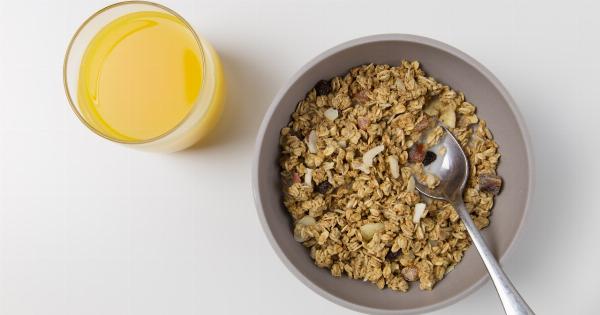Diabetes is a chronic disease that affects millions of people around the world. It is characterized by high blood sugar levels due to either insufficient insulin production in the body or ineffective use of the insulin that is produced.
One of the key aspects of managing diabetes is maintaining a healthy diet. Food labels play a crucial role in helping individuals with diabetes make informed choices about the food they consume. In this article, we will discuss how to decode food labels for better diabetes management.
What are food labels?
Food labels are informative panels or tags that provide essential information about packaged food products. They typically include a variety of details, such as serving size, calories, macronutrient content, and ingredient lists.
The information on food labels allows consumers to understand the nutritional composition of the food items they purchase. For individuals managing diabetes, food labels become an indispensable tool in making appropriate dietary choices.
The importance of food labels for people with diabetes
For people with diabetes, tracking and controlling their carbohydrate intake is crucial to managing their blood sugar levels.
Food labels shed light on the amount of carbohydrates present in a serving of the food product, helping individuals make more informed decisions about portion sizes and meal planning. Additionally, food labels also provide information about other important nutrients, such as fats, proteins, vitamins, and minerals, which play a vital role in maintaining overall health.
Decoding food labels for diabetes management
Understanding how to read and interpret food labels is essential for effective diabetes management. Here are some key factors to consider:.
1. Serving size
The serving size mentioned on food labels is important because all the nutritional information displayed on the label refers to that serving size. Be mindful of the portion size you consume and adjust the nutrient values accordingly.
2. Total carbohydrates
Carbohydrates have the greatest impact on blood sugar levels. The total carbohydrate content represents the sum of all sugars, dietary fiber, and other forms of carbohydrates in a serving.
Individuals with diabetes should monitor their carbohydrate intake and focus on consuming complex carbohydrates rather than simple sugars.
3. Dietary fiber
Dietary fiber is a type of carbohydrate that is not fully digested by the body. It is essential for people with diabetes as it helps slow down the absorption of glucose, thus preventing rapid spikes in blood sugar levels.
Aim for foods that are high in dietary fiber.
4. Added sugars
Added sugars are sugars that are not naturally present in foods but are added during processing or preparation. Foods high in added sugars can lead to significant spikes in blood sugar levels.
Limiting the consumption of foods with high added sugar content is crucial for diabetes management.
5. Total fats
Foods high in total fats, especially saturated and trans fats, can increase the risk of heart disease in individuals with diabetes.
It is important to choose foods with lower levels of saturated fats and trans fats while prioritizing healthy unsaturated fats.
6. Sodium
Sodium, commonly found in salt, is a mineral that can impact blood pressure levels. Individuals with diabetes, especially those with other comorbidities like hypertension, should focus on reducing their sodium intake to maintain better overall health.
7. Vitamins and minerals
Food labels often provide information about the presence of essential vitamins and minerals. These nutrients are vital for overall health and well-being.
Individuals with diabetes should ensure they consume a balanced diet that includes a variety of nutrient-rich foods.
8. Ingredient lists
The ingredient list on food labels provides valuable insights into the composition of the product.
It is important to be familiar with the ingredients and be cautious about any allergens or additives that may not be suitable for the individual’s dietary needs.
9. Health claims and marketing buzzwords
Sometimes, food labels include health claims or marketing buzzwords that can be misleading.
Be cautious of claims like “sugar-free,” “low-fat,” or “all-natural” and always refer to the nutritional information to make an informed decision.
10. Consulting a registered dietitian
While decoding food labels can be helpful, it is always recommended to consult a registered dietitian or healthcare professional to create a personalized meal plan based on individual health goals and requirements.
In conclusion
Food labels are powerful tools for individuals managing diabetes. By decoding the information on food labels, individuals can make healthier food choices, effectively manage their blood sugar levels, and maintain overall well-being.
Understanding serving sizes, carbohydrate content, fiber intake, healthy fats, and other nutrients empowers individuals with diabetes to control their diet more effectively and lead a healthier lifestyle.






























